I constantly recommend cruising as the most accessible way to travel. It’s convenient and there are many possibilities for destinations to visit on a cruise. While I have always loved cruising (I’ve gone on six cruises so far), I have frequently had questions about accessibility on ships and how to improve it.
Recently, I reached out to my favorite cruise line, Royal Caribbean, and they put me in touch with their Director of Disability Inclusion. I was able to have an in-depth conversation with him about accessibility issues in the cruising industry, and it was a huge eye-opener for me. I learned a lot from our talk and I’m sure that you will learn from it too. If you’ve ever had any questions for Royal Caribbean, hopefully they are answered below. I tried to ask him what I thought all of you would want to know.
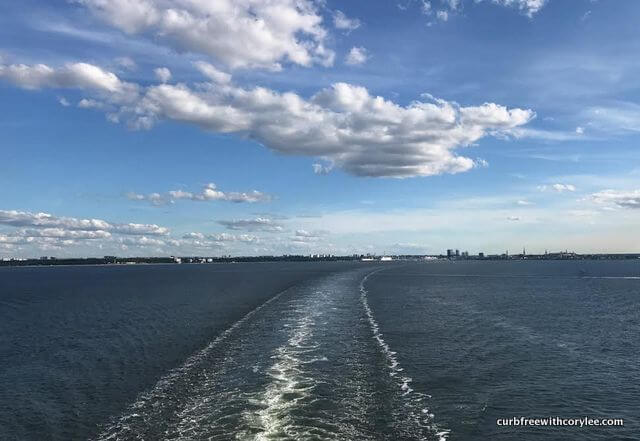
Here is my interview with Ron Pettit, Director of Disability Inclusion, and Celia, a Public Relations Coordinator at Royal Caribbean –
Cory: What is your name and your role at Royal Caribbean?
Ron: My name is Ron Pettit and I’m the Director of Disability Inclusion and I mediate compliance for Royal Caribbean Cruise Limited. I am also responsible for the overall accessible experience for three of our global brands, which are Royal Caribbean International, Celebrity Cruises and Club Cruises. I think for the purposes of our call today, we’ll speak primarily about Royal Caribbean International, but I’m happy to talk about the other two brands if you’d like.
Cory: Yeah, if there is any information you want to throw in about Celebrity Cruises or the other cruise line that will be great. I have actually only cruised with Royal Caribbean, but I am always eager to learn about any cruise lines. On Royal Caribbean ships though, how many accessible rooms would you say that there are on average?
Ron: That’s a really good question. All of our ships have accessible staterooms on the Royal Caribbean International brand. We start at four accessible rooms for our Empress of the Seas and Majesty of the Seas, which are obviously older ships and we go all the way up to Oasis class ships, which includes Harmony of the Seas, our newest ship, as well as Symphony of the Seas, which is coming up next year in 2018. Both ships have 46 accessible staterooms and they are divided into a variety of categories; interior, ocean view, balcony and suites, so we have a wide variety of accessible rooms. Many of our inside cabins now have virtual balconies which is a new feature that we’ve added to our ships. So they also have a view of the outside as virtual balconies. On our Oasis class ship, many of our balcony staterooms have a traditional balcony that overlooks the sea, but we also have balcony staterooms that overlook Central Park and Boardwalk. So we’ve got some rather unique accessible staterooms. We have, on Oasis class ships, an accessible suite. Most of the suites on our ships are junior suites but within the suite category, we have several different types of suites so on our Oasis class ship, we have what we call a Crown Loft Suite, which is a two story urban loft suite and normally there are stairs to get to the upper level. This accessible suite has an elevator that helps guests get to both levels of the suite and also there’s a bathroom on each level. The bathrooms are accessible, so again going back to kind of what we do at Royal Caribbean, we put in a lot of thought into the types of accessible staterooms. In a lot of categories, the accessible staterooms occupy you know, third and fourth guests and are really great for families. We also have accessible rooms with connecting doors to another stateroom so that if you’re traveling with kids or a caregiver, you have a stateroom with a connecting door but the door itself is not accessible, it’s just one of those small doors, but you can still have it between the two rooms. So we’ve got a lot of really great accessible stay options for our guests.
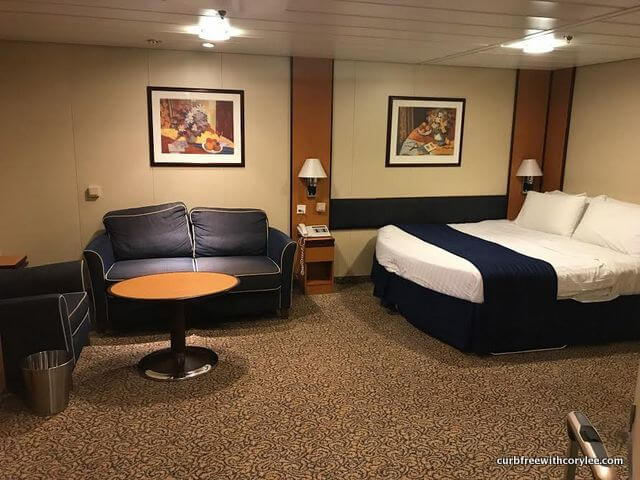
Accessible inside stateroom on Royal Caribbean’s Serenade of the Seas

Accessible bathroom on Royal Caribbean’s Serenade of the Seas
Cory: Okay, great. Thanks so much for that information! Aside from the state rooms, I’ve been on about five cruises so far, but I’ve never really noticed accessible pool lifts on cruise ships. Maybe Royal Caribbean offers them on some ships, but I’m not sure. So my question is do you guys have that and if not, do you plan to put them on more ships in the future?
Ron: Yes, we have lifts and there is at least one pool lift and one rolling pool lift. Going forward, we’re expanding and adding more lifts so the eventual goal would be to put a lift in each pool. Some of our newer ships have sockets. But while we have one lift, we can move the pool lift from one pool to another to provide options for our guests. We’re still working on getting lifts for every pool, but at a minimum, we have one pool lift and one rolling pool lift on every ship.
Cory: Okay, awesome. I wasn’t aware of that and that’s really good to know. I know you mentioned maybe in the future that it would be in every pool, do you have any kind of idea of when that could possibly be by?
Ron: There is no timeline right now, we’re kind of still in the investigations phase because at Royal Caribbean alone we have 24 ships across the fleet and Celebrity has ten. So we have several ships to assess and kind of make sure that we can do that. We just know definitely that there are some pools with one pool configuration that either one, we won’t be able to do because of the way they are designed or two, it’s going to take quite a bit of effort to do. So we’re still in the investigations phase of figuring that out. So unfortunately there is no timeline yet.
Celia: To kind of carry on with what Ron was saying in terms of the timeline for putting a lift at every pool, I just want to point out that the cruise ships are ships that go for revitalization every five to ten years and something like a pool lift would have to be done during a revitalization. So it’s not like we can just decide to do it all by next year and it will be done. We kind of have to work within a certain framework which is obviously very different from the type of land based hotel or kind of hospitality setting, which you may not have been aware of so, I just wanted to get it into context for you.
Cory: Okay great. Well, that’s got into my next question actually, so in the accessible rooms, I mean there’s things like roll in showers and the bathrooms are really large on the Royal Caribbean ships that I have stayed in. Have you guys ever thought about adding anything such as ceiling hoists, which would allow the wheelchair user to get out of their chair and into the bed or even like automatic doors that could be opened with a button or something like that?
Ron: So let’s talk about automatic doors, so apparently they are available on accessible rooms on Radiance class and Quantum class ships. We are again looking at the feasibility of adding them to other existing ships and again, it’s kind of like the pool lift question. Again there’s no timeline yet because we’re still in the investigations feasibility stage and we’re kind of going through that process now, so the timing is good, but unfortunately we’re still in the process of evaluating. We do get a lot of great feedback from our guests about that and so we are really looking hard at trying to make that happen on our existing ships. We do have automatic doors in public areas. We find that to be really helpful. We also have automatic doors to the public restrooms. We’ve added that feature on many of our ships. Again, radiant class and up is where you start to see a lot of automatic doors.
So that’s the first part. You asked about ceiling hoists and you know, we’ve thought about it, but we still have to think about the feasibility of doing that. Our biggest concern is structural capability to have a ceiling hoist mounted on the ceiling. We just want to make sure that if we do install something like that, that we are able to physically handle the weight, the structure of an internal ceiling hoist. The other piece also is the volume of requests, and it is not very high. And that’s one of the things we look at when we start to think about improving accessibility on what we call above and beyond ADA compliance.
Because we are all about improving the accessibility guest experience, not only do we want to comply with ADA regulations, we want to go above and beyond. So when we think about ceiling hoists, we see that we only get a few requests a year for those. The alternative at this point is guests can work with special needs appointed providers and there are a couple of them. There are two that are major. One is called Special Needs at Sea and the other is Scootaround and they both will rent hoyer lifts.
They kind of need to go into an accessible room because it’s the only room big enough to accommodate all of that, but guests have that option but that seems to address the need for now. But if we continue to get requests for it, it’s something we continue to look at, but right now the volume is not where it makes sense for us to offer it in our accessible rooms.
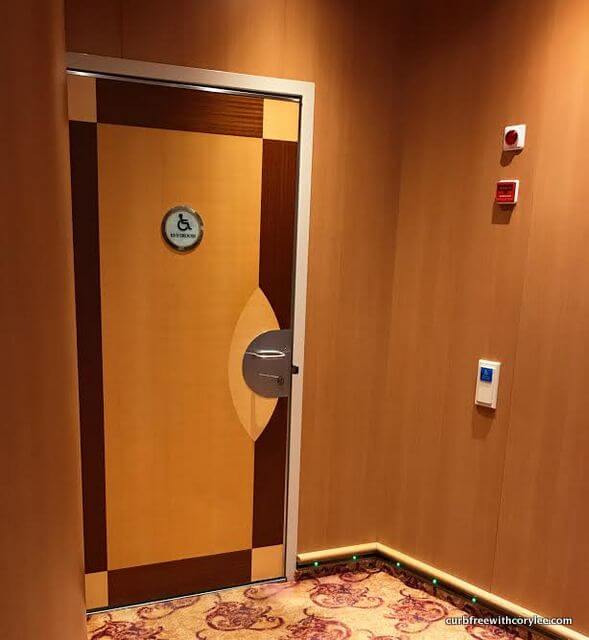
Cory: Can Special Needs at Sea supply hoyer lifts to all Royal Caribbean ports?
Ron: Yes. They do a majority of our ports. They also rent items like wheelchairs. The biggest one is scooters. They also rent out oxygen equipment, you know, primarily portable, oxygen concentrators. They do even rent out hospital beds for guests who need that. Hospital beds and hoyer lifts tend to be on the same level in terms of usage. It’s not often during the year, maybe 10 or 15 times a year. So like I said, the volumes aren’t there, but there are options. So they can arrange for rental of this equipment and what they generally do is they deliver the equipment to the guests room. So the equipment is there in the room, ready to go and at the end of the cruise, the guests leave the equipment in the state rooms and the company just comes by and picks it up. It’s very convenient.
They do mostly all ports; primarily they do all the North American ports. They can do most of Europe and then when you get beyond that, it depends on the company. I know Special Needs at Sea can support Australia and New Zealand, but you know when you get beyond all of that, like Asia, it may not serve those ports yet, but they can in the future. But majority of those requests come from North America and Europe so that’s where those companies have dedicated most of their services.
Cory: Okay, great. If the wheelchair user gets on the ship and for some reason something’s not right in the room or they haven’t arranged something beforehand, who should they get to try and get it resolved on the ship?
Ron: What we would recommend is they work with their stateroom attendant. All of our guests have stateroom attendants. So the best thing is that if there’s something that they need in their room like the bed higher, you know, or people who have sleep machines. To help with their sleep apnea, usually we arrange for an extension cord and distilled water. Some people who are diabetic and need a chest container or a mini refrigerator, to keep their medication cold like insulin. Lot of times our guests call us or email us and arrange that in advance. We try to have that equipment in the room before they board, you know, room service starts at one o’clock but that may vary at different ports. We recommend always working with the stateroom attendants. If they’re not satisfied then they can escalate to desk service and go from there.
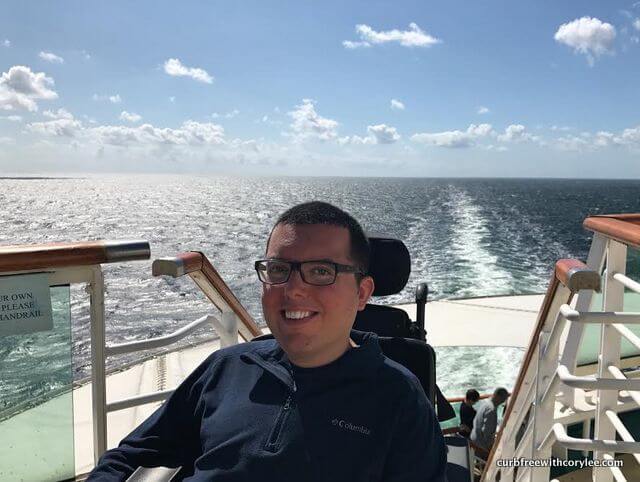
On my recent cruise with Royal Caribbean
Cory: Just by me being in the accessible travel industry, I’ve seen that the accessible travel market is huge, but it’s not really often talked about in advertising and commercials, in a big way like that. Whenever you guys are thinking about accessibility on the cruise ships, how do you go about reaching those customers and how does Royal Caribbean promote accessibility?
Ron: In terms of promoting and reaching the audience, there are a couple of things that we do. We have accessibility options on our website and we outline all the services that we offer to our guests.
On the Royal Caribbean International website specifically, we have an online brochure, PDF brochure, and we have a text brochure. That brochure kind of describes all the products and services and it’s kind of used as a marketing tool by travel agents. The majority of our cruises are sold to travel agents, so we take time to educate our sales team and we do have an online travel agent training site. We have online courses regarding our accessibility program as well as our family program, so travel agents can take and learn more about our programs.
So we educate them about all the different products and services that we have to offer.
There are travel agents that just specialize in accessible travel or even just accessible cruising and we’ve actually formed an accessible travel agent advisory board made up of really premier accessible travel agents. I’ve known them for many years. I’ve been with Royal Caribbean for 11 years. Many of the travel agents I had known before coming to Royal Caribbean. So we have a great group of travel agents and they give us advice and recommendations on how we can help to make it easier to do business with them and the feedback we get from the advisory board, they truly love us, they’re loyal to Royal, and they find that we’re the easiest company to do business with primarily on the accessible side.
They love that we have the great accessible hardware. Then they also love the fact that our on-board staff is very accommodating and helpful to our guests with disabilities. Then the other thing that I did want to mention is we have other advisory boards, not just the accessible travel agent ones. We do have what we call a disability advisory board, made up of people with different disabilities and they represent national and local disability advocacy organizations and then we also have an autism advisory board, made up of autism experts, parents and individuals with autism.
Those advisory boards help us improve the guest experience by giving us feedback. All these three advisory boards started almost two years ago in 2015. So we’ve done several meetings, we’ve had recommendations, implemented recommendations so that’s been one of the reasons why we partner with organizations because what happens there is that as our representatives learn how great and all the things we offer for our guests with disabilities, they report back to their organization, then it goes back to the members. One of the things that I feel is that word of mouth truly is the best form of advertising.
And you know, we consistently get that from our guests and travel partners. They love Royal Caribbean and our other brands, and believe we’re very flexible and an industry leader in accessible staterooms. We have had guests tell us that they are better than hotels they’ve stayed in. So these are all great things that we do. When you think of marketing, like commercials and ads, it’s really our way of getting the brand out there in terms of awareness understanding. But when we want to talk about accessibility, we feel the best way to go is talking to disability organizations, individual guests, and travel agents. We find that is one of the most effective ways of getting the word out. We need to do more. So we’re going to continue working on that.

With Sylvia of Spin the Globe
Cory: What about accessibility within the ports? Is there any information available for when someone arrives to their destination(s)?
Ron: So, the thing is, we travel to a lot of destinations, and that’s the challenge for us. Our guests and travel partners want additional information about the ports that we go to. And so, this becomes an information gathering exercise for us with a lot of ports. We have our disability advisory board meeting next month, and we talked about this previously, so, we’re trying to finalize the list of information that they want us to share.
I think the challenge is that we can’t collect every piece of information. When you cruise, the day before you get into the port, usually in your state room you get a destination guide. If you’re going to Athens for example, it tells some of the shops to go to, and some points of interest.
They would like us to put accessible information somewhere in there. And the challenge is to figure out what type of accessible information we need to put in, and some of that may include things like are there accessible taxis, are there curb cuts? And the problem with some of these questions and some of the answers is it’s not always a hundred percent clear. So, that’s some of the challenge that we’re trying to figure out, is how do we provide that information, what type of information, and do it in a meaningful way.
Again, we’re not going through a full accessibly audit. Somebody might say, “Is the place reasonably accessible?”. Well, you might be able to get to the main entrance, but you might not be able to get to a bathroom. It’s kind of a large project, and one of the things we want to do is figure out where do we start. The Caribbean is our number one destination, so maybe that’s where we start because that’s where we get the most guests and the most volume of questions.
Cory: I know whenever I travel or cruise, the number one thing I always look for is accessible transportation within the destination. If there was information about taxis or even, like, accessible metros or subways, that would be tremendously helpful to me.
Ron: Yeah. That seems to be one of the primary things that people are looking for, is accessible transportation. Are there accessible taxis? Is the subway accessible? Sometimes, at some ports, we offer accessible shuttles to the city, and sometimes, they want to know the details of that accessible shuttle because sometimes it’s available, sometimes it’s not. It just depends on the location.
You have to remember that we’re sailing to big destinations, a lot of them are outside the United States, and while they have made great accessible improvement in Europe, there’s still some challenges for the infrastructure. That’s the challenge we’ve been facing, trying to help deliver a full accessible experience. Our ships are fully accessible, now we want to help figure out how do we help our guests in the different ports of call.
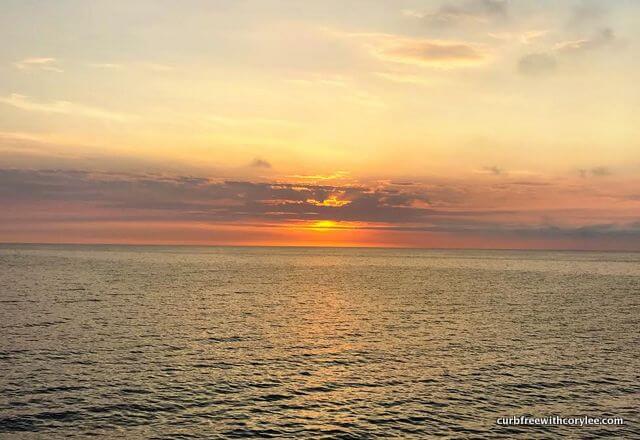
Cory: And can you talk about accessible shore excursions for a bit?
Ron: Yeah, as part of my job I lead two accessible teams, one is our access team or access department, and it’s a team that handles pre-cruise inquiries from guests and travel partners, travel agents. We call travel agents travel partners. The access team handles requests for things like, “I need to order large printed menus. I need dialing with an interpreter. I need a chair for the bathroom.” Those types of requests.
So, I’ve got that team and then I’ve got another team, which is our accessible shore excursions team. They are a pre-cruise contact center also. They primarily deal over email because a lot of the information flows by email, and so that’s the preferred process, and we handle those. Again, those agents handle questions about planning accessible shore excursions.
Part of the challenge sometimes is when you start pulling up our normal shore excursion documents. Sometimes, they don’t always list all the accessible options and almost any accessible tour needs to be booked through our accessible shore excursions department. Because one is, they have access to the inventory, and then two, they can go and see all the accessible options, even the ones that are not listed in the regular shore excursion book. So we do have accessible shores excursions and many destinations. Do you have any either questions or comments?
Cory: I think that should be it — I feel like I really learned a lot about Royal Caribbean, what you guys have to offer in regards to accessibility and I really appreciate it. Thank you so much for your time and for answering all of my questions.
Ron: Great. Yeah, it’s been a pleasure talking to you today, Cory. I’m glad the information was helpful. Obviously, reach back out to us if you need anything else. We’re here for you.
*Thanks to Royal Caribbean for arranging this informative interview!
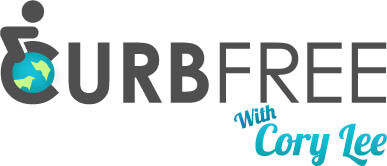
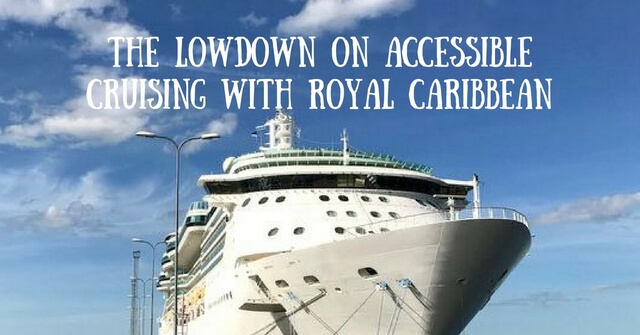

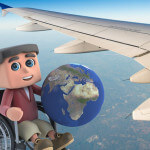
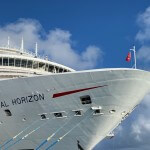
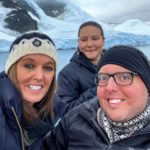


I also have SMA and have cruised with Celebrity Cruises on four occasions, mainly on the Eclipse sailing from Southampton UK. Wheelchair access on this ship is fantastic, including automatic doors on all accessible staterooms. Where the company is failing is on communication, namely telling people what is available to make this stay more pleasant. There is also a complete lack of planning for shore excursions – accessible trips are cancelled/rearranged at the drop of a hat, the accessible transport is often inappropriate, and many ports are either tendered (zero wheelchair access) or suddenly develop a tidal variation preventing disembarkation. The company would do well to employees mystery shoppers with disabilities to give genuine feedback on its performance.
That was interesting. We are going on our 2nd RC cruise in Feb 2018, I booked over 18 months in advance, and I was unable to book an accessible room, unless it was a suite or an interior. A suite went beyond our budget,it would have cost at least $1000 more, and an interior room was not be feasible as they are too confining with 2 small kids. So we booked a balcony room – but on the Explorer of the Seas there were no accessible balcony rooms. Which means that my wheelchair will “hopefully” fit somewhere in the cabin. Thankfully I am not confined only to my chair, and I can walk short distances, so it’s not the end of the world, it was just frustrating to not really have an accessible room as an option – we just have to hope that even the doorway is wide enough to push it through.
Otherwise, I have found their inclusion policies very good, especially in relation to kids with special needs – it is the reason why we chose them a second time around.